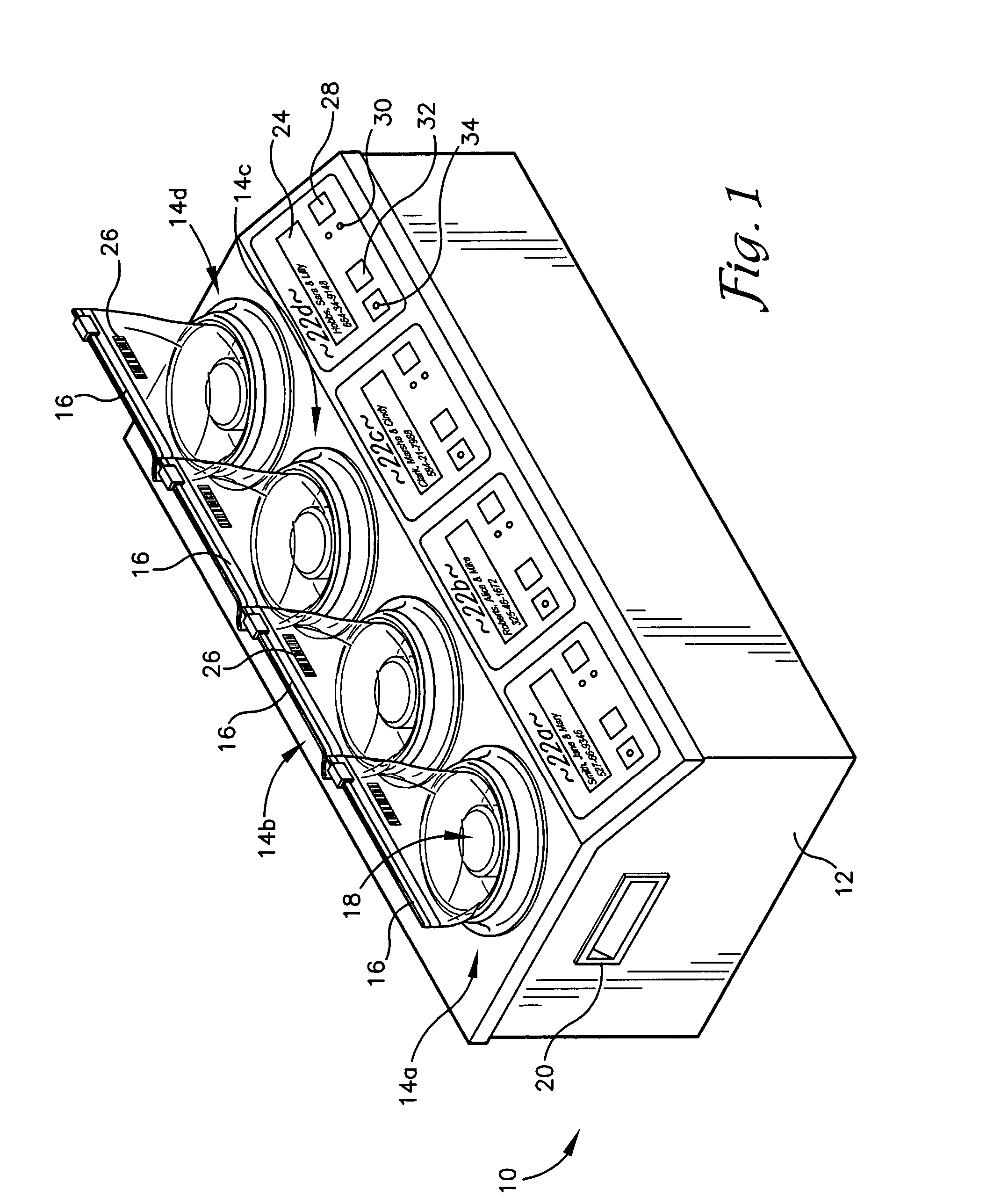Neonatal Nutrition Warmer
a technology for heating fluids and nicu nurses, which is applied in the field of neonatal nutrition warmers, can solve the problems of wasting precious time maintaining an archaic warming process, frequent and time-consuming process, and nicu nurses' waste of precious tim
- Summary
- Abstract
- Description
- Claims
- Application Information
AI Technical Summary
Benefits of technology
Problems solved by technology
Method used
Image
Examples
Embodiment Construction
[0032] As required, detailed embodiments of the present inventions are disclosed herein; however, it is to be understood that the disclosed embodiments are merely exemplary of the invention, which may be embodied in various forms. Therefore, specific structural and functional details disclosed herein are not to be interpreted as limiting, but merely as a basis for the claims and as a representative basis for teaching one skilled in the art to variously employ the present invention in virtually any appropriately detailed structure.
[0033] Referring to FIG. 1, an embodiment of the warming device 10 is shown comprising a housing 12 which generally supports a plurality of wells or reservoirs 14a-14d into which may be placed reservoir bags or liners 16. Reservoir bags 16 are utilized to generally hold a container 18 which is filled with a liquid neonate nutritional substance, such as breast milk, that is in need of thawing or warming to a temperature for use. It will be appreciated by th...
PUM
 Login to View More
Login to View More Abstract
Description
Claims
Application Information
 Login to View More
Login to View More - R&D
- Intellectual Property
- Life Sciences
- Materials
- Tech Scout
- Unparalleled Data Quality
- Higher Quality Content
- 60% Fewer Hallucinations
Browse by: Latest US Patents, China's latest patents, Technical Efficacy Thesaurus, Application Domain, Technology Topic, Popular Technical Reports.
© 2025 PatSnap. All rights reserved.Legal|Privacy policy|Modern Slavery Act Transparency Statement|Sitemap|About US| Contact US: help@patsnap.com



